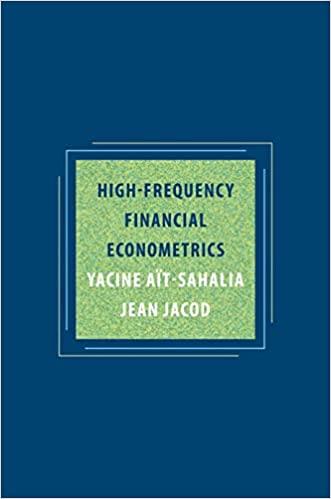Question
Answers should be on spreadsheets with brief explanations when necessary. Collins Electronics, Inc. of Oklahoma exports 30,000 sets of low-density light bulbs per year to
Answers should be on spreadsheets with brief explanations when necessary.
Collins Electronics, Inc. of Oklahoma exports 30,000 sets of low-density light bulbs per year to Chile under an import license that expires in five years. In Chile the bulbs are sold for the Chilean peso equivalent of $50 per set. Direct manufacturing costs in the United States and shipping together amount to $30 per set, and there are no other costs. The market for this type of bulb in Chile is stable, neither growing nor shrinking, and Collins holds the major portion of the market.
The Chilean government has invited Collins to open a manufacturing plant so imported bulbs can be replaced by local production. If Collins makes the investment, it will operate the plant for five years and then sell the building and equipment to the Chilean investors at net book value at the time of sale, plus the value of any net working capital. (Net working capital is the amount of current assets less any portion financed by local debt.) Collins will be allowed to repatriate all net income and depreciation funds to the United States each year.
Outlay: Collins anticipated cash outlay in dollars, in 2015 would be:
Building and equipment $1,400,000
Net working capital 1,000,000
Total $2,400,000
All investment outlays will be made in 2015, and all operating cash inflows will occur at the end of years 2016 through 2020. Assume the Chilean peso is pegged to the U.S. dollar, so no change in exchange rate is expected.
Depreciation and investment recovery: Building and equipment will be depreciated over five years on a straight-line basis. At the end of the fifth year, the $1,000,000 of net working capital may also be repatriated to the United States, as may the remaining net book value of the plant if any.
Sales price of bulbs: Locally manufactured bulbs will be sold for the Chilean peso equivalent of $50 per set.
Operating expenses per set of bulbs:
Materials purchased in Chile (dollar equivalent) $12 per set
Materials imported from Collins Electronics $10 per set
Variable costs $22 per set
Transfer prices: The $10 transfer price per set for raw material sold by the parent consists of $6 of direct costs incurred in the United States and $4 of pretax profit to Collins. There are no other operating costs in either Chile or the United States.
Taxes: The corporate income tax rate is 40% in both Chile and the United States (combined federal and state).
Discount rate: Collins Electronics uses a 15% discount rate to evaluate all domestic and foreign projects.
a. Using the data given, calculate annual project cash flows for the years 2015 through 2020.
b. Using the data given, calculate annual cash flows to the parent for the years 2015 through 2020. Cash inflows to Collins Electronics consist of
i. profit on component sales to Chile, less taxes,
ii. dividends remitted from Chile at 100% of net profit after tax
iii. funds equal to depreciation charges, remitted to the United States,
iv. cash received from liquidating building and equipment, if any,
v. cash received from recapture of working capital investments
vi. cash flow losses due to the ending of export sales of bulbs manufactured in the United States.
c. Using the data given, calculate the net present value of the project from both the subsidiary viewpoint and the parent viewpoint. Discuss the results.
Part 2 (Questions d, e, and f)
d. Collins Electronics learns that Matsubara Electronics of Japan will make a similar investment in Chile should Collins decide not to invest. Matsubara would be protected by the Chilean government from competitive imports. No imports would be permitted. Using the data given, how would this information affect your analysis and recommendations?
e. Assume the conditions of part (d) above. Imports from parent Collins are paid for at once. However, now assume that Chile blocks all other cash remittances to the United States until the end of the fifth year, at which time all free cash may be repatriated. Liquid funds invested in Chile earn 2% per annum, compounded annually, after Chilean taxes. How would this information affect your analysis and recommendations?
f. Assume the conditions of part (e) above. Collins is able to enter into an arrangement to use operating free cash flow (depreciation plus net income after tax) to purchase unprocessed tin for shipment and ultimate sale in the United States. In other words, instead of investing at 2%, the company may use the money to purchase tin to ship back to the U.S. for resale. The Chilean cost of tin is charged against Chilean earnings at full cost. The supply of unprocessed tin is unlimited, but transportation costs and U.S. demand is such that it can be sold only at 80% of its Chilean purchase price. How would this opportunity affect your analysis and recommendations in part (e) above?
Step by Step Solution
There are 3 Steps involved in it
Step: 1

Get Instant Access to Expert-Tailored Solutions
See step-by-step solutions with expert insights and AI powered tools for academic success
Step: 2

Step: 3

Ace Your Homework with AI
Get the answers you need in no time with our AI-driven, step-by-step assistance
Get Started


